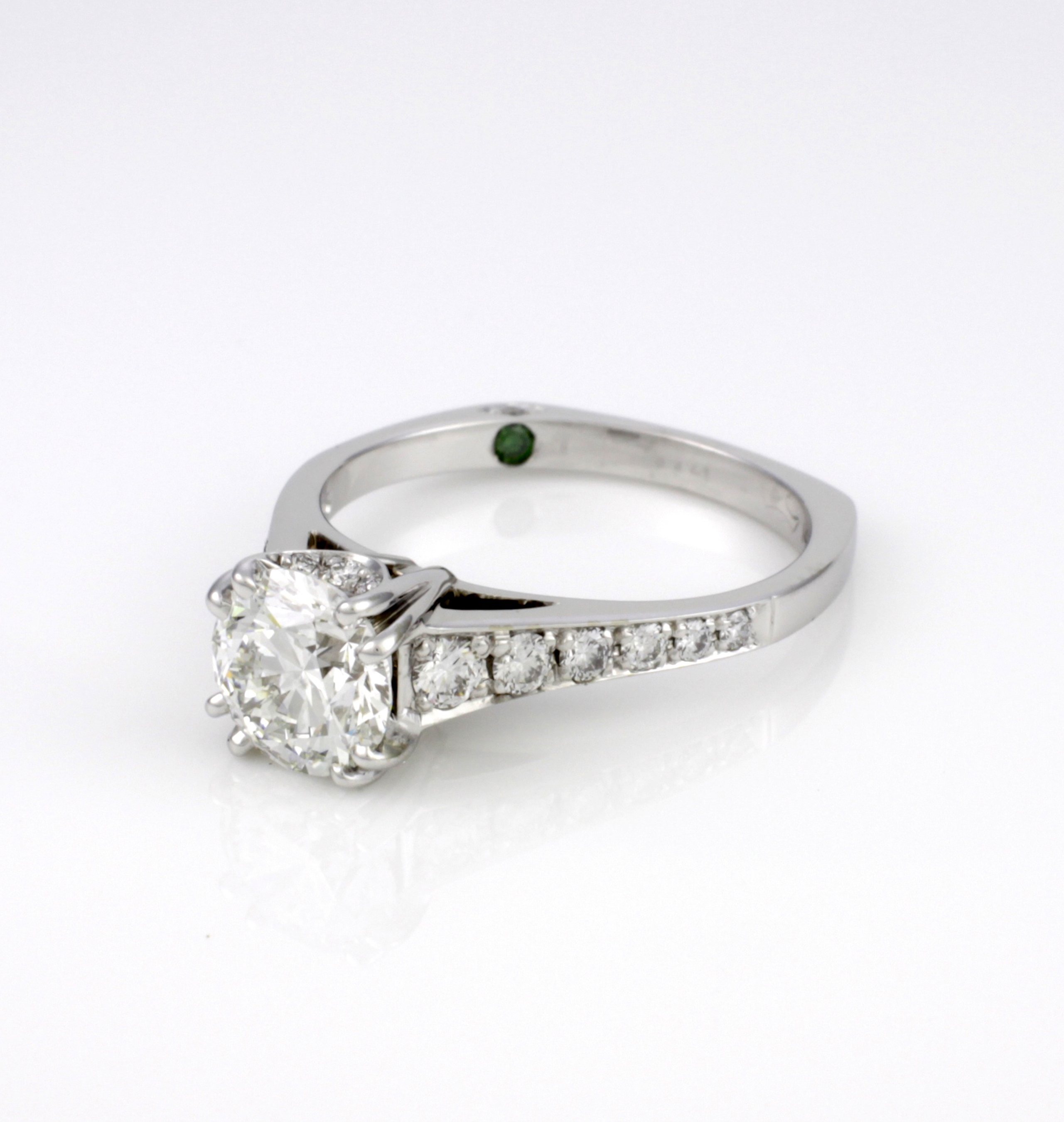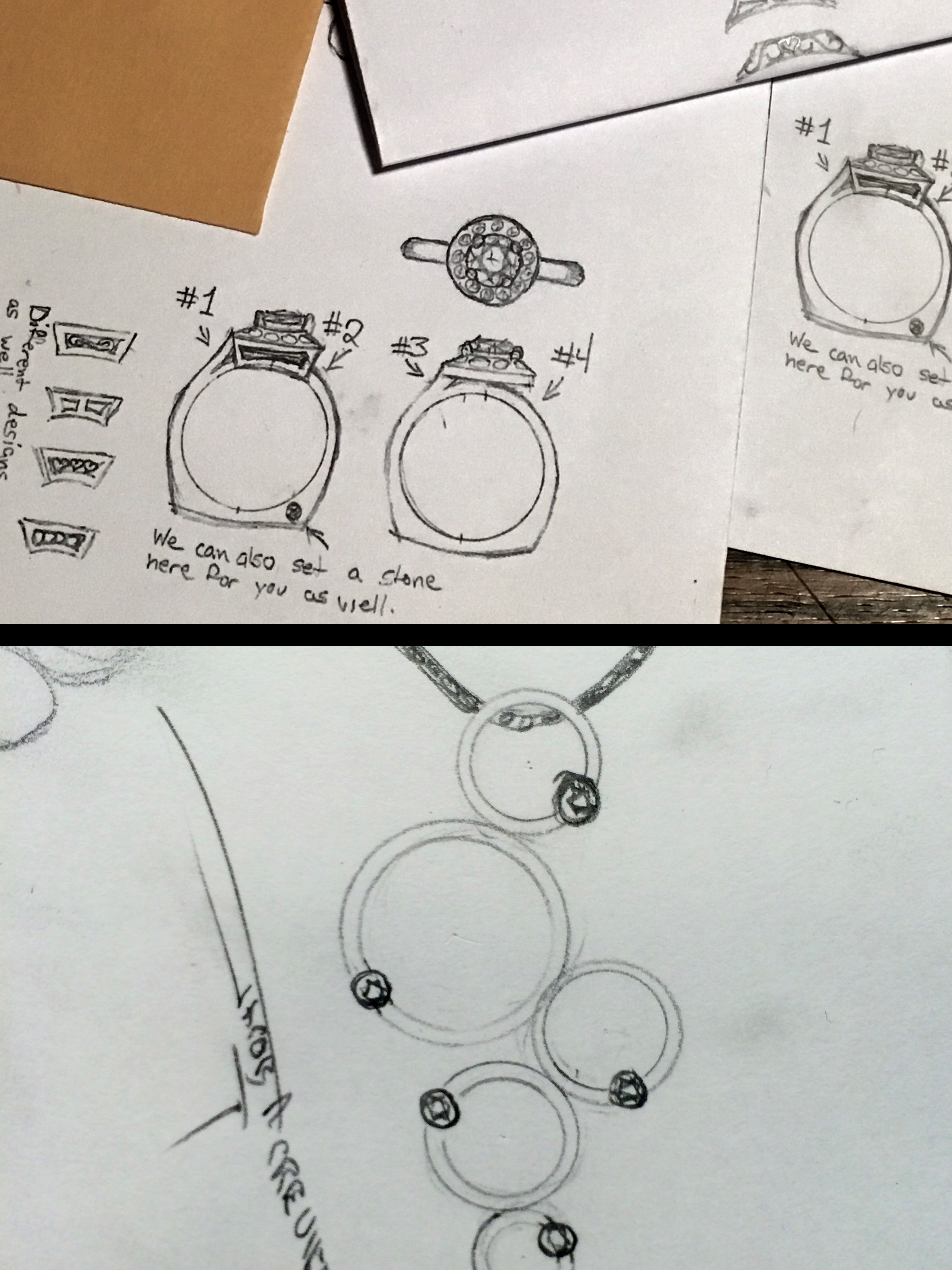
Design
We like to get the basics down first. What kind of metal(s) do you want in your piece, what size, what is your budget, and what are some styles you like?
It is very important to get the design right. We want to create something unique that says, ”This is who I am, this is me.” Sometimes it can take a few sittings, drawing different styles, and tweaking the design until the customer is happy with the way it looks. A lot of the time this happens over the phone and through emails, because half of our business comes from outside South Dakota. Once we get the basic idea figured out, we create a few more drawings of the piece, and can also make a 3D computer rendering, if the customer would like.
From here, we need to decide if we are going to hand fabricate the ring or if we are going to carve the wax and cast it. Both have their advantages and disadvantages, but usually one is better for a particular project.
Hand Fabrication
Hand fabricated jewelry dates back to the dawn of creation, and separates the amateurs from the master jewelers.
This is truly the finest in old-world, traditional jewelry making techniques, and is the best production method for many designs.
We start by studying the design, then bend, hammer, cut, and file each piece. Next, we weld and solder those individual pieces together to bring the drawing to life. Because each component is worked by hand, the quality shines from the inside out.
Hand-fabricated jewelry is a product of time, patience, and accumulated knowledge, making each piece irreplaceable.
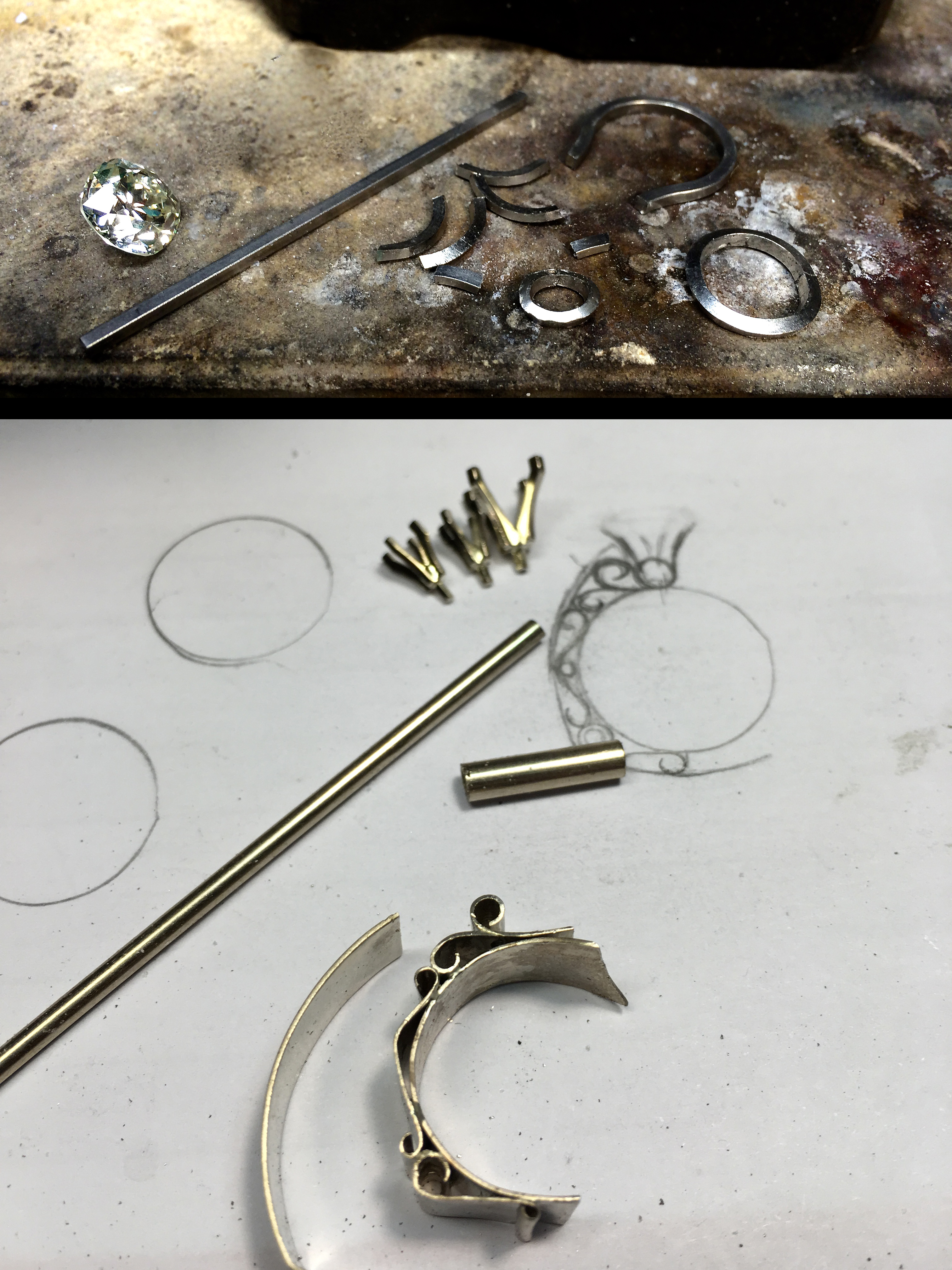
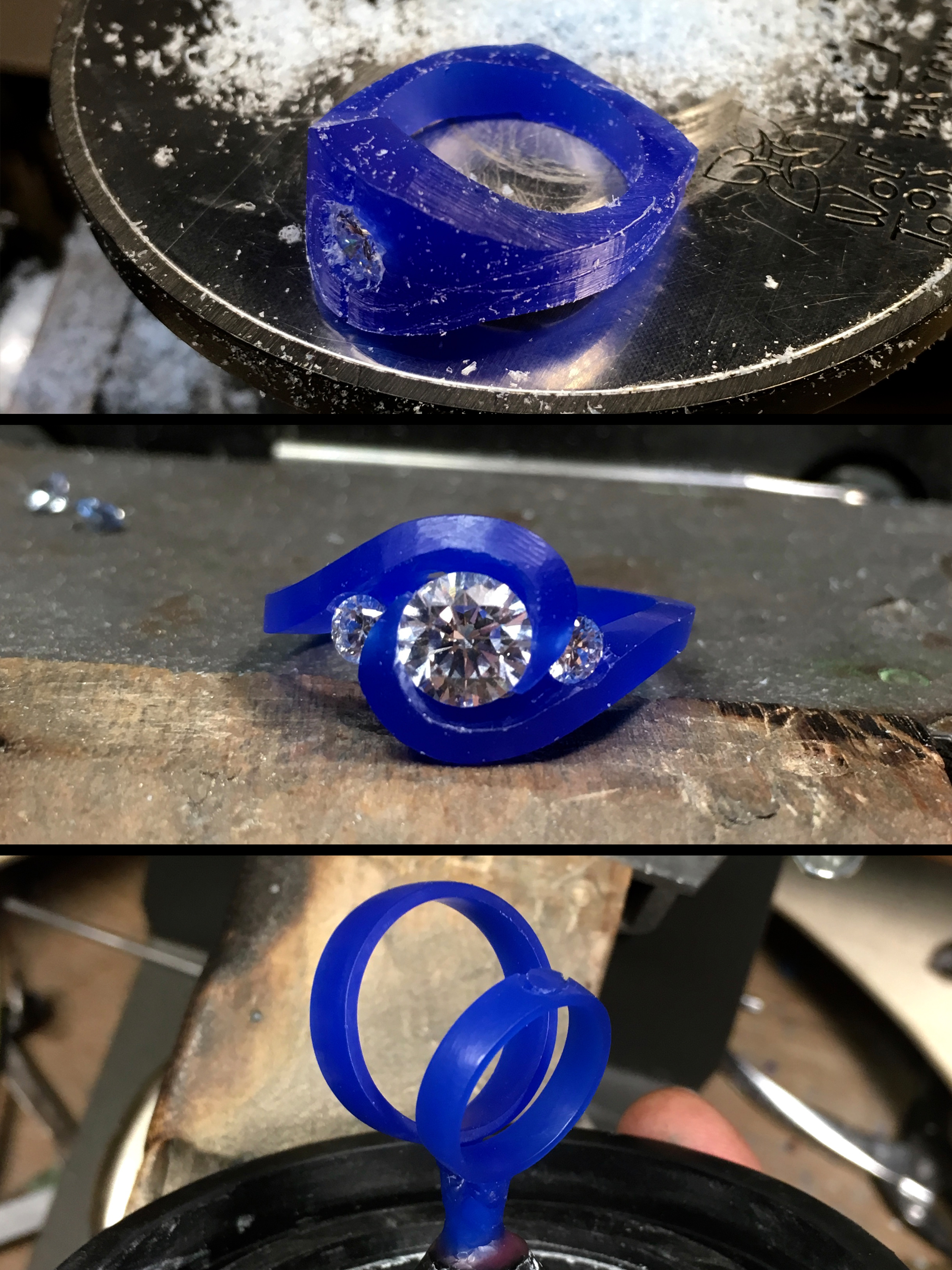
Wax Carving
One of the main reasons we do most of our work in wax first is because you can see, feel, and try on the wax before it is actually cast.
This gives you a great idea of what the actual piece will look like in the end. Also, if there are any last minute changes, it is a lot easier to change them in the wax than in the metal later on in the process.
After you have tried on the piece and are satisfied with the way it looks and feels on your finger, neck, wrist, etc, we sprue the wax piece, (a sprue is the part that the metal is poured through) and weigh the wax to figure out how much metal we will need to use for the casting. After that, we measure out the correct amount of precious metal and move to the casting process.
Casting Process
The wax sprue is placed on a rubber plate and a steel cylinder (flask) is slid over the top. Investment (like plaster of Paris) is mixed with water, stirred, and poured into the flask. This is placed in a vacuum to remove any air bubbles around the wax.
After the investment has hardened, it is placed in a kiln that slowly heats up to about 1400 degrees, burning out all of the wax leaving a perfect impression of the piece in the investment.
We next heat the metal in a crucible until it is liquid and pour the molten metal into the hot flask. After the flask cools, we break the mold and out comes a piece that looks exactly like the wax.

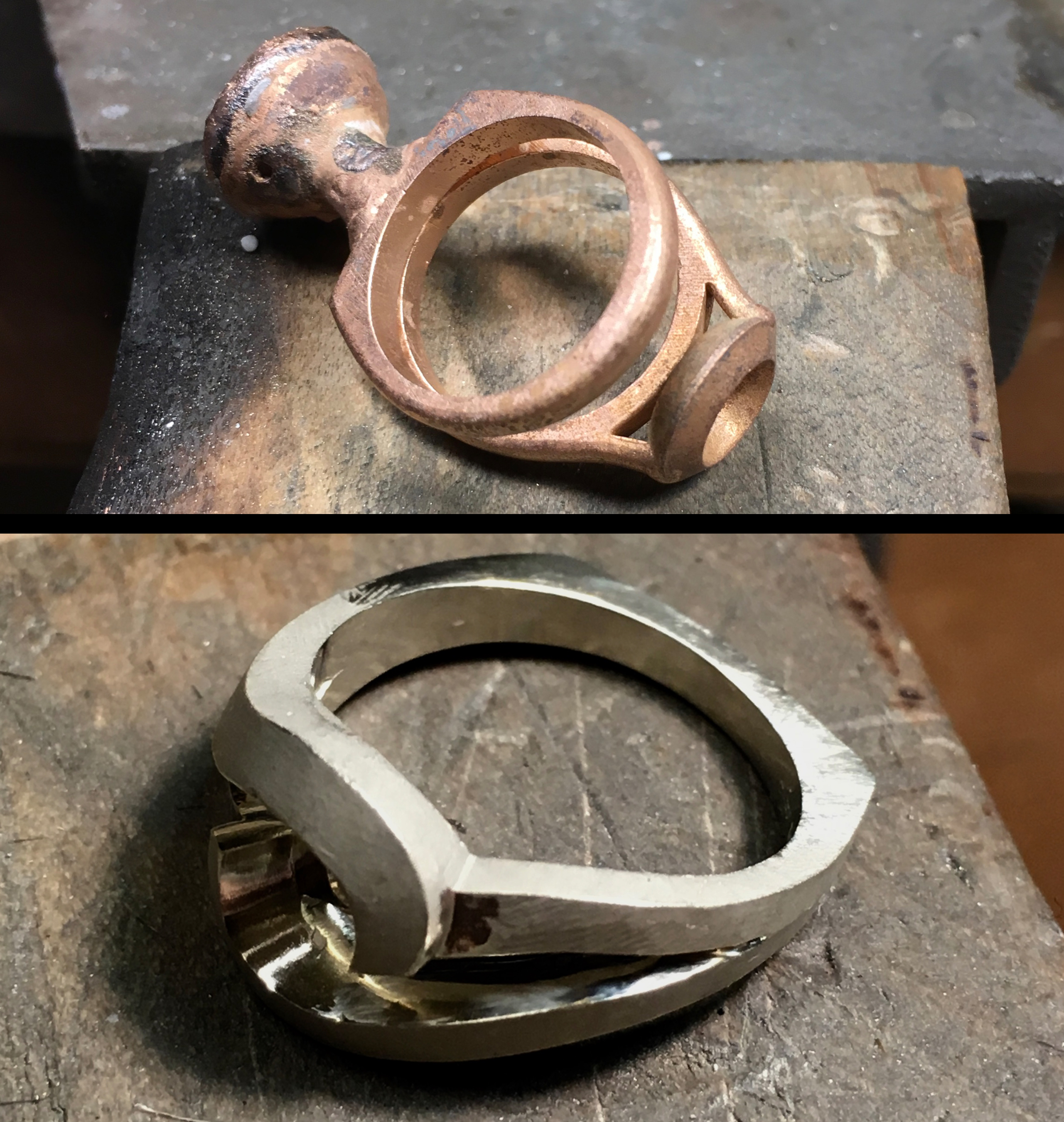
Refinishing
Refinishing is where we take the rough casting and slowly file, sand, and polish the piece until it is shiny, flat, and ready for setting.
What sets us apart at Crevier Jewelry is that we don’t just refinish the outsides, but we also refinish the grooves and the underside of the piece as well. This can give a lot more sparkle to the final piece and makes everything look more crisp and even.
This is also where we assemble the piece if it is two different types of metals, and/or add any hand fabricated small details.
Setting the Stones
At Crevier Jewelry, we strive to use only the best diamonds and gemstones.
We also do all of our setting under a microscope. This allows us to see things that would be missed by most jewelers and could potentially cause problems later on down the road. Every stone (even the small ones) have at least 4 prongs (small pieces of metal) pushed over the stone.
That means that if we have a piece with a 100 stones, it has around 400 prongs on it. We never glue our stones into place, and because everything is set under a microscope, there is little chance of stones coming loose during the life of the piece.
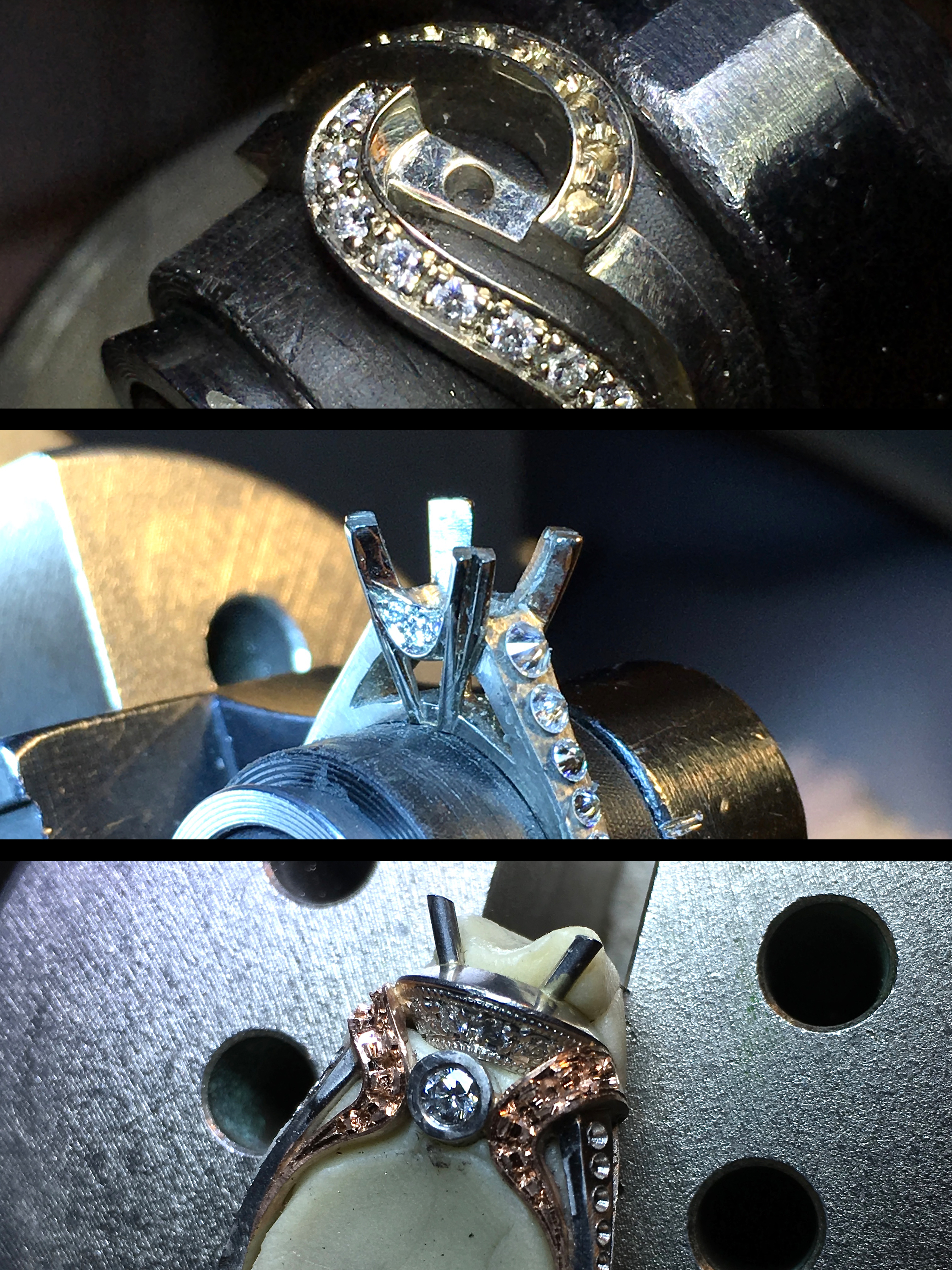
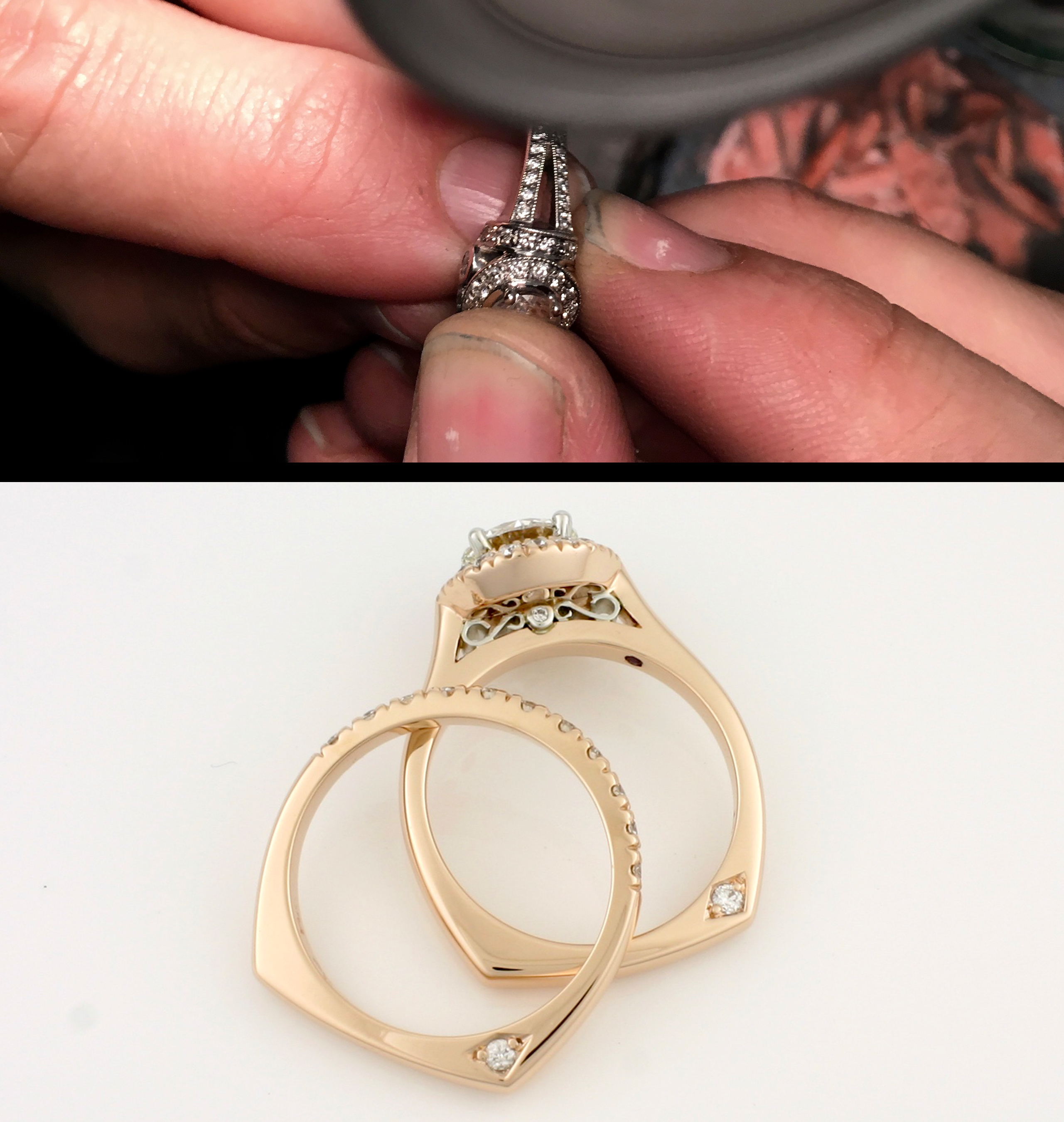
Final Polishing and Checking
This is one of the best parts because the piece is almost finished.
Slowly polishing the metal with brushes, cotton wheels, and polishing compound brings out a new luster, which gives the piece depth and that mirror shine that makes you smile.
After it is polished, we run it through an ultrasonic cleaner, steam clean it, and do a final quality control check.
The piece is done and will be treasured for generations to come!
Rhodium Plating
In this day and age where a lot of people are buying white gold, most Jewelry stores forget to mention your white gold ring is rhodium plated.
Rhodium is in the platinum family and is a by-product of refining platinum. It is a hard, white metal that protects the piece of jewelry and gives it a perfect, white look. After only a half year of wearing your jewelry, you may notice a yellowish hue to your ring (especially on the bottom).
The reason for this is: In its pure form, gold is yellow. To make 14k white gold (14k w/gold is 58% gold) we have to bleach out the yellowish gold color with other metals like nickel, silver, platinum, or palladium.
Almost 99% of white gold jewelry sold today is rhodium plated.
